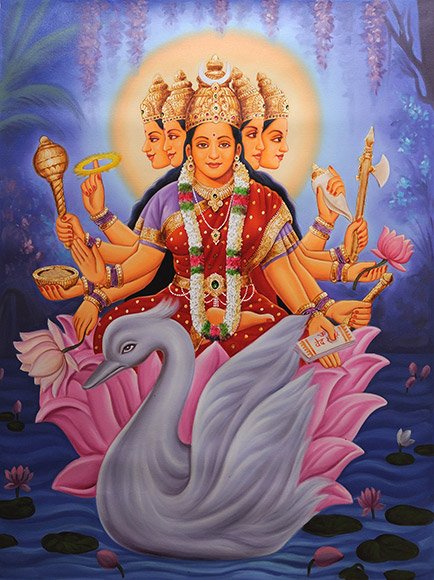Mitrananda, Mitrānanda, Mithranantha, Mitra-ananda: 3 definitions
Introduction:
Mitrananda means something in Hinduism, Sanskrit, the history of ancient India. If you want to know the exact meaning, history, etymology or English translation of this term then check out the descriptions on this page. Add your comment or reference to a book if you want to contribute to this summary article.
In Hinduism
Chandas (prosody, study of Sanskrit metres)
Source: Shodhganga: a concise history of Sanskrit Chanda literatureMitrānanda (मित्रानन्द) (1559 C.E.), a renowned scholar of Sanskrit metrics, contributed to the science of metrics through his Chandobhāskara. He was the son of Himācala (sometimes Hemācala) Miśra and belongs to the family of Śāṇḍilyagotra. His father was a master of many śāstras (śāstravit) and belonged to Bhairuṇḍanagara.

Chandas (छन्दस्) refers to Sanskrit prosody and represents one of the six Vedangas (auxiliary disciplines belonging to the study of the Vedas). The science of prosody (chandas-shastra) focusses on the study of the poetic meters such as the commonly known twenty-six metres mentioned by Pingalas.
Shaktism (Shakta philosophy)
Source: Google Books: Manthanabhairavatantram1) Mitrānanda (मित्रानन्द) is the consort of Raktā and the lord of Oḍḍa, according to Tantric texts such as the Kubjikāmata-tantra, the earliest popular and most authoritative Tantra of the Kubjikā cult.—Accoridngly, as the Goddess (i.e., Kubjikā) said to Goddess Raktā, “[...] (You are the goddess who) regulates (the cosmic order) (niyāmikā), abides in tranquillity (nivṛttisthā) and, accompanied by eight sons and daughters, brings about many creations. In the Kṛta Age your consort is Mitrānanda, the great lord of Oḍḍa, who burns well, full of (every good) quality [...]”.
2) Mitrānanda (मित्रानन्द) is another name for Bhairava, according to the second recension of the Yogakhaṇḍa of the Manthānabhairavatantra, a vast sprawling work that belongs to a corpus of Tantric texts concerned with the worship of the goddess Kubjikā.—Accordingly, as the Goddess said to Bhairava: “By virtue of (your intense) desire to achieve (this) in (our) friendship, I have given (you) the accomplishment of the Command. [...] By virtue of the Command your name is this: Mitrānanda. And I, O god, am Vakrikā and I am always endowed with your (same) attributes. [...]”.
3) Mitrānanda (उड्डीश) is the name of the Siddha associated with Kāmarūpa, one of the sacred seats (pīṭha), according to chapter 10 of the according to the Kularatnoddyota, one of the earliest Kubjikā Tantras.

Shakta (शाक्त, śākta) or Shaktism (śāktism) represents a tradition of Hinduism where the Goddess (Devi) is revered and worshipped. Shakta literature includes a range of scriptures, including various Agamas and Tantras, although its roots may be traced back to the Vedas.
India history and geography
Source: Wikipedia: India HistoryMithranantha or Mithrananthapuram Trimurti Temple is a Hindu temple complex in Thiruvananthapuram, Kerala, India. It is a temple in where devotees get to offer worship to all the three Trimurti deities, namely, (Brahma, Vishnu and Shiva). The Temple is located on the western side of Padmanabhaswamy temple in Thiruvananthapuram.

The history of India traces the identification of countries, villages, towns and other regions of India, as well as mythology, zoology, royal dynasties, rulers, tribes, local festivities and traditions and regional languages. Ancient India enjoyed religious freedom and encourages the path of Dharma, a concept common to Buddhism, Hinduism, and Jainism.
See also (Relevant definitions)
Partial matches: Anantha, Mitra, Ananda.
Starts with: Mithrananthapuram, Mitranandana.
Full-text: Bhairundanagara, Himacāla, Uddishta, Pratyaya, Samkhyana, Nashta, Ekadvayadilaghukriya, Adhvayoga, Sanchi, Niyamika, Nivrittistha, Prastara, Yugmabheda, Yugmapuja, Olini, Chandobhaskara.
Relevant text
Search found 1 books and stories containing Mitrananda, Mitrānanda, Mithranantha, Mitra-ananda, Mithra-anantha, Mitra-ānanda; (plurals include: Mitranandas, Mitrānandas, Mithrananthas, anandas, ananthas, ānandas). You can also click to the full overview containing English textual excerpts. Below are direct links for the most relevant articles:
Impact of Vedic Culture on Society (by Kaushik Acharya)
Sanskrit Inscriptions (K): The Paramāras < [Chapter 3]